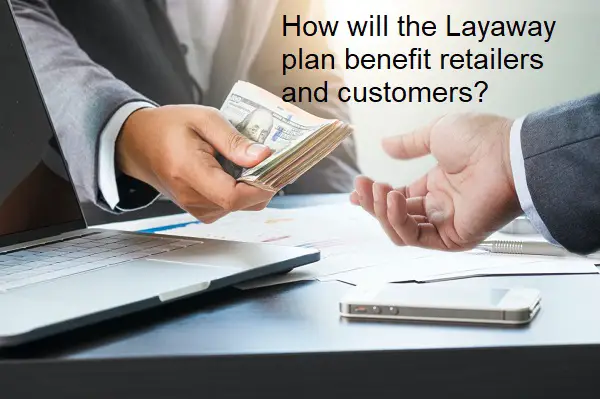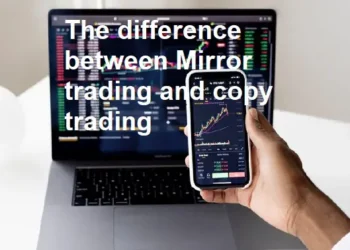What is Layaway?
Layaway is basically defined as a shopping method, in which customers shop for certain products by making a small deposit and store the products for later collection. They make balance payments when they are financially able to purchase the product. This concept makes it easier for customers to transfer payments in installments or in smaller amounts until they are able to complete transactions by paying in full. For suppliers, the layaway concept guarantees that customers will buy the product immediately.
How will the Layaway plan benefit retailers and customers?
The plan is specifically designed for customers who are not in a financial position to make a lump sum payment for merchandise. They are allowed to make a layaway plan and make a small deposit for the product. Seller stocks products for specific customers. The seller may also charge a fee for storing the product for the customer until payment is made in full. Layaway plans don’t seem risky to the seller. If the customer is unable to make payment for the merchandise, the product is returned to the shelf for sale. Whether the money paid by the customer will be returned to them depends on the seller.
Well, they can lose the entire amount or refund the amount paid to the customer minus certain fees. Not only is it a great option for lower income groups, but layaway plans can prove to be a lucrative business opportunity for retailers. This allows you to offer your merchandise to people who cannot afford a lump sum payment. Since customers make small payments for products and commit to buying them from your store later, it’s unlikely they’ll back down. Not only out of commitment, but they already paid money for the product. It’s only a matter of time until they make full payment and get the product.
Advantages of Layaway
– Payment flexibility: Layaway gives consumers the option to purchase items they might not otherwise have with a down payment.
– Interest-free: Purchases made through installment plans are usually interest-free.
– No credit check: Credit checks are usually not required with payments. This can be helpful for those working to improve their credit score.
– No negative credit impact: Because installment arrangements are usually not on a customer’s credit report, missed payments generally won’t have the negative impact on their credit score as they can on a credit card.
– Longer term: Layaway plans can have a longer term, giving the customer more time to pay off the balance.
Disadvantages of Layaway
* Wait time: Customers cannot take merchandise home right away.
* Exclusions: Some stores have exclusions and limitations on items that qualify for layaway.
* Not widely available: Layaway is not as widely available as other payment arrangements. This means that it can be difficult to find a store that still offers it.
* No positive credit impact: On-time payments usually won’t have the positive impact on a customer’s credit score as they could with a credit card.
* Partial refund: The retailer may charge a fee if the customer cancels during the layaway plan.
* Potential fees: Stores may charge a service, storage, or layaway fee in addition to the merchandise price.
Layaway is a shopping method in which the buyer pays a down payment for an item, then the item is kept by the seller until the buyer pays off the remaining bill in installments. Layaway is a method that ensures buyers get the goods when they finish paying the entire invoice.
The layaway concept originates from the Great Depression era, which continued to be used until the 1980s. Along with the development of the credit card business, many sellers are now starting to abandon layaway. For example, Wallmart officially ended its layaway service in September 2006 after 44 years of absence. Wallmart had implemented the layaway system again in September 2011 because the American people’s finances were hit by the 2008 financial crisis. It’s just that the age of Wallmart’s layaway service also didn’t last long, it only lasted until last year 2021.
Is layaway the same as credit?
Layaway and credit are two different things. On layaway there is no interest charged, there is a down payment, and the goods are kept by the seller. While on credit there is interest, goods can be brought by the buyer, and sometimes there is no down payment.
Layaway system mechanism
There are four initial layaway processes that are generally implemented in shops, namely:
– Buyers choose the groceries they want to buy with the layaway system.
– Buyers pay advances whose values vary. Some have set a peg based on a certain amount, others have set a peg based on total purchases.
– Buyers repay the shop from time to time until it is paid off. This installment can be made weekly or monthly.
– After the layaway bill is paid, the buyer can come to the store to pick up his groceries.
Costs that exist in the layaway system
– Service fee: this fee includes administrative fees and costs for storing groceries. The nominal ranges from 5 USD to 10 USD.
– Cancellation fees: there is a penalty for buyers who cancel purchases in the middle of the road. There are also fines for shoppers who fail to pay off grocery bills.
– Late fees: there are penalties for buyers who are late in paying their layaway installments.
What if in a layaway agreement the buyer fails to pay off the installments? The answer is depending on the seller’s policy. It could be that all the money that has been entered is declared forfeited, or it could also be returned again with deducted warehouse and storage costs.
During the great depression, the mechanism for buying and selling goods like this was quite effective because it could reduce the possibility of loss to sellers in the event of default, aka bad credit, from extending credit to buyers. Yes, if we examine the layaway system conceptually, it is suitable for use in slowing economic conditions. You see, people’s purchasing power is decreasing but on the one hand sellers also don’t want to take risks, because decreased purchasing power has the potential to cause default when selling goods on credit.
So, if we look at the current conditions, the layaway system is indeed very unpopular. The problem is that in general the economy is currently growing, especially in Indonesia. In fact, what is increasingly developing is the “pay later” mechanism, aka buying on credit. Even if there is a similar system, currently it is more akin to “pre order”. The difference is, in the pre-order system, we don’t pay installments for the goods, but only pay an amount of DP, alias the receipt, and this usually happens because the goods are not available at that time. Only after the goods are ready, the buyer must pay the price of the goods, otherwise the DP will be forfeited. Yes, indeed layaway and pre order are different, I’m just giving a comparison of the closest situation between the layaway system and the current system of people’s transaction habits.









